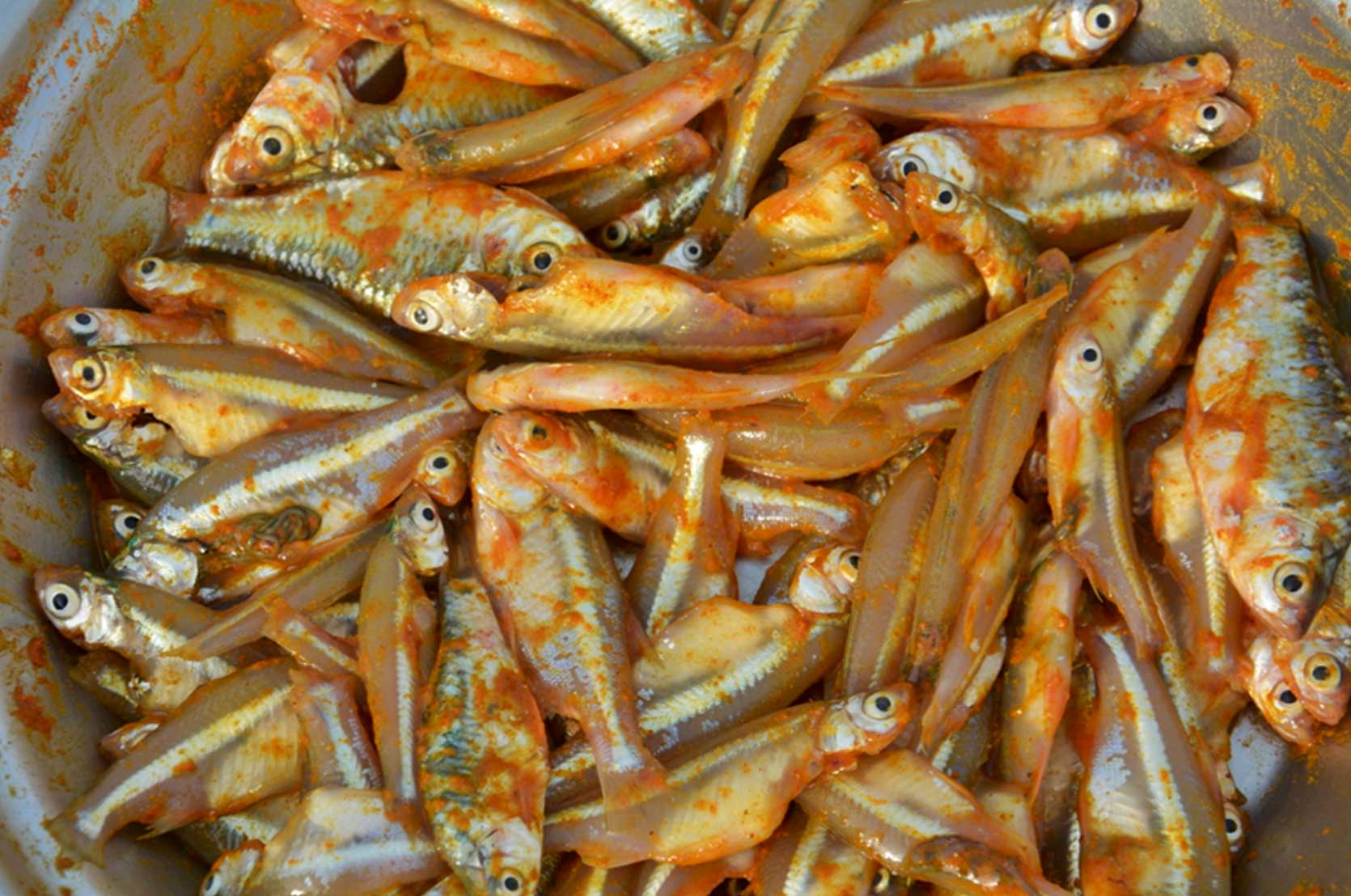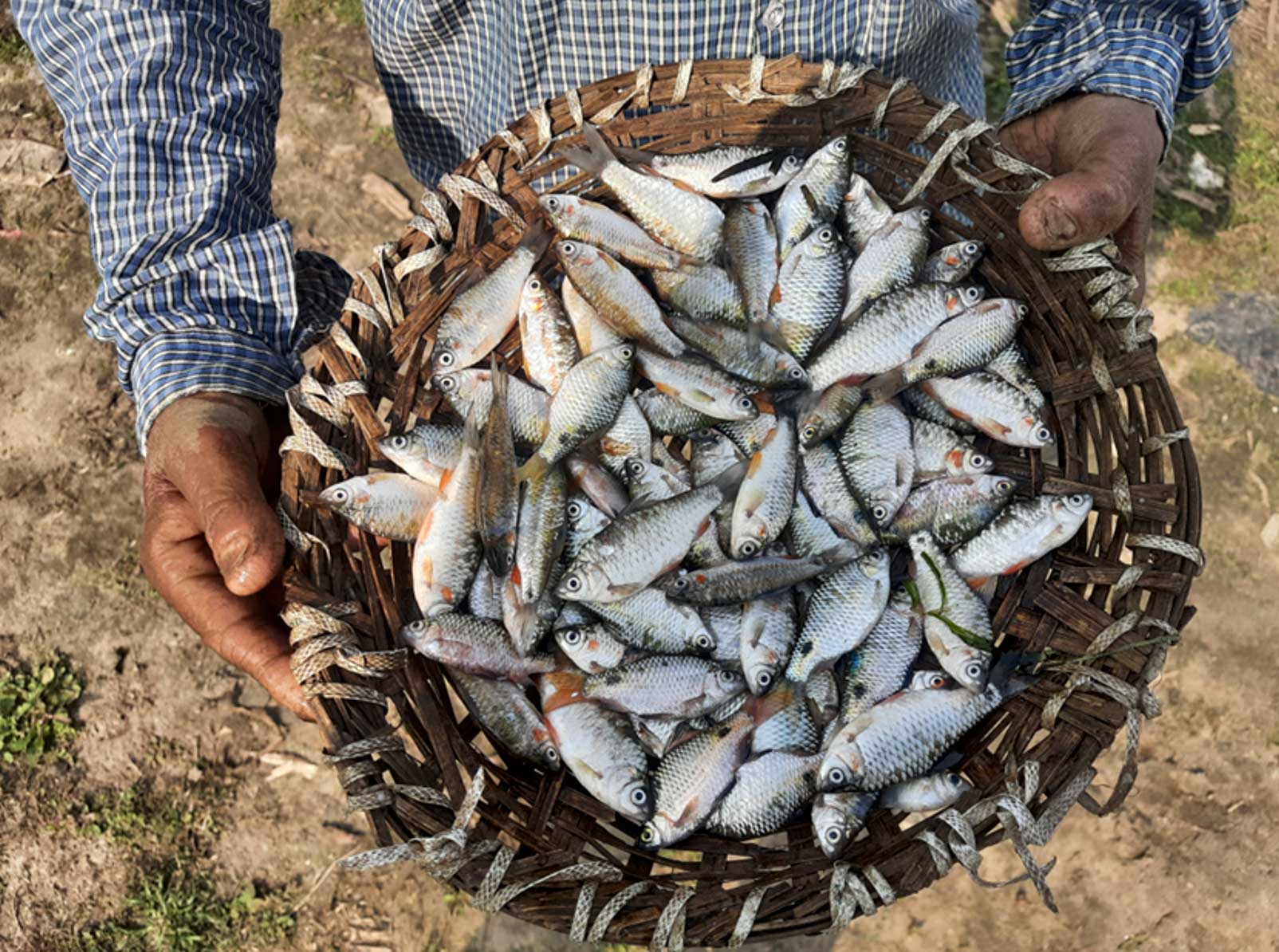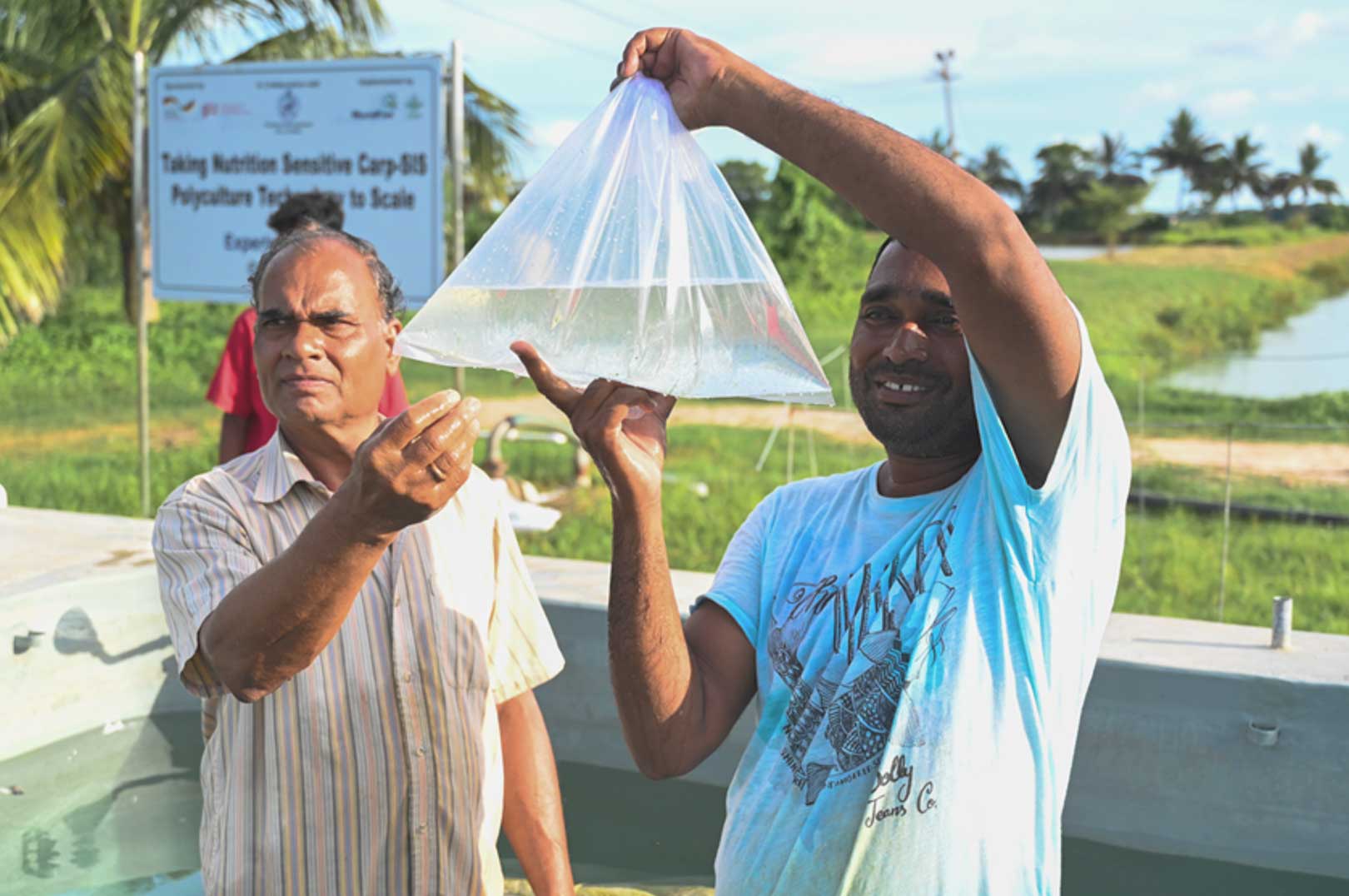Harvesting Health: Unlocking the Potential of Small Indigenous Fish Species for propelling Nutrition-Sensitive Aquaculture in India
Introduction:
Small indigenous fish species (SIS) have long been overlooked in mainstream aquaculture, which tends to focus on larger species like carps. However, SIS play a vital role in aquatic food production systems, originating from freshwater environments and offering remarkable nutritional benefits. Renowned as natural ‘superfoods,’ these diminutive species are rich in protein, fatty acids, vitamins, and minerals, making them highly prized for their health benefits. Some of the SIS are many times richer in micronutrients such as Iron, Zinc, Calcium, Iodine, Selenium, Vit A and Vit B12 than commonly farmed fish such as carps, tilapias and pangasius. SIS also present nutritional advantages as they are often consumed in their entirety, encompassing the head, bones, and eyes, thereby utilizing all the available nutrients, including micronutrients. In countries like Bangladesh and India, SIS have been crucial in inland capture fisheries, providing a reliable source of sustenance for rural communities and contributing significantly to food security.

Challenges Faced by SIS:
Despite their importance, SIS diversity and abundance in Asia are declining rapidly due to habitat degradation, unsustainable aquaculture practices, pollution, and climate change. As a result, these species are becoming increasingly scarce and expensive, depriving individuals with limited financial resources of their nutritional and cultural benefits.
The Promise of SIS Integration in Carp Polyculture:
In recent years, efforts have been made to integrate SIS into conventional carp polyculture, particularly as a nutrition-sensitive innovation to enhance micronutrient intake among farming households, especially women and children. One standout SIS in this regard is the mola carplet (Amblypharyngodon mola), known for its high micronutrient content, unique taste, and compatibility with other species.

WorldFish’s Pioneering Role:
WorldFish has been at the forefront of advocating and promoting nutrition-sensitive carp-mola polyculture in various South Asian countries for several decades. Through these efforts, significant quantities of mola have been produced in grow-out ponds without compromising carp yields, thereby increasing the consumption of micronutrient-rich mola by women and children. However, this effort relying on collecting SIS parent fish from natural sources have proven costly, labour-intensive, and unsustainable.
Overlooking Seed Production Techniques:
While research in aquaculture has predominantly focused on larger, commercially attractive species, seed production techniques for SIS have been largely overlooked. Failure to consider the micronutrient composition and nutritional outcomes as essential factors in species selection has hindered the widespread adoption of SIS culture. Meanwhile, techniques for mass producing small fish species, closely related to nutrient-rich SIS, are well-established in the aquarium trade. Addressing the lack of commercial mass production and distribution of SIS seed is vital to advancing sustainable SIS culture.
The Project:
WorldFish, in collaboration with local governments and financial support from the German Federal Ministry for Economic Cooperation and Development (BMZ) commissioned by the Deutsche Gesellschaft für Internationale Zusammenarbeit (GIZ) through the Fund International Agricultural Research (FIA), is implementing a project ‘Taking Nutrition-Sensitive Carp-SIS Polyculture Technology to Scale’ in India from 2021 to 2024 aimed at developing easily scalable techniques for the mass production of vital SIS seed through standardized hatchery-based breeding.
A Breakthrough in Mass Seed Production of SIS:
Innovative techniques and specialized technologies have enabled WorldFish to achieve significant milestones in India. By utilizing hormone administration and environmental manipulation, the project successfully developed a mass seed production protocol for various SIS, including mola and pool barb (Puntius sophore), during 2022 and 2023. Specifically designed tanks and oxygen-rich water supplied through an aeration tower have enhanced breeding performance and larval survival. This pioneering approach has resulted in nearly 10 million mola seeds and 1 million Puntius seeds produced to date. Mola hatchlings are ready for sale within 3 to 4 days of hatching, and the breeding protocol is easily adoptable by existing fish hatcheries.

Benefits of Hatchery-Produced SIS Seed:
Hatchery-produced SIS seed ensures uniform size and age, facilitating optimal stocking and enhancing survival and growth rates. Uniform-sized SIS at harvest make them more marketable and fetch better prices. Furthermore, the possibility of stimulating spawning earlier than in the wild provides farmers with a head-start over nature.
Capacity Building and Collaboration:
The project has developed practical manuals and guidelines for SIS seed production and conducted capacity-building programs involving farmers, hatchery owners, government officers, and researchers. Collaboration with the Departments of Fisheries in Odisha and Assam has been instrumental in scaling up this nutrition-sensitive innovation.
Promising Opportunities for India’s Aquaculture Future:
The breakthrough in mass seed production of SIS presents a promising opportunity to accelerate nutrition-sensitive carp-SIS culture in India. WorldFish and its partners are leading the way toward a brighter future in aquaculture and food security through sustained innovation and sustainable practices. The involvement of the government is particularly crucial in advancing and disseminating this innovation. Expanding nutrition-sensitive programs across the region, especially in undernutrition-challenged areas, will lead to a healthier and more sustainable future for all.
Link to further materials
- https://worldfishcenter.org/project/taking-nutrition-sensitive-carp-sis-polyculture-technology-scale
- https://worldfishcenter.org/blog/cracking-code-mola-mass-production-boosts-nutrition-sensitive-aquaculture-india
- https://worldfishcenter.org/blog/boosting-nutrition-sensitive-aquaculture-hatchery-produced-mola-seeds-assam
- https://digitalarchive.worldfishcenter.org/handle/20.500.12348/5302
Contact Person
Key buzzwords
Small Indigenous Fish Species, Nutrition-sensitive approach, Mola carplet, Mass seed production

